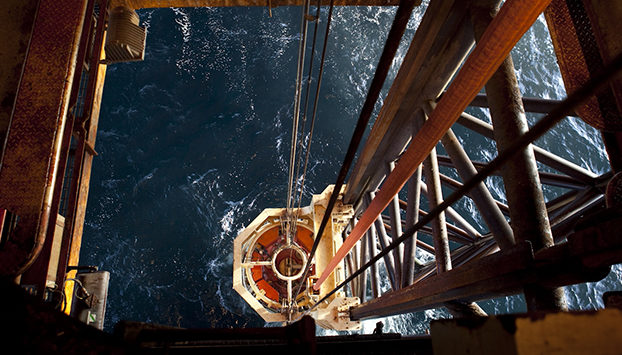
Oil is in free fall and Terry Clark couldn’t be happier.
In mid-2014, when the crude price topped $100 a barrel, Clark made an offer to buy properties from Dune Energy Inc., a small driller with money trouble. Dune turned him down. A year later, as oil plunged to $60 a barrel, Dune filed for bankruptcy and Clark’s White Marlin Oil & Gas Co. picked up the assets at auction at a deep discount.
“What we offered versus what we got it for, it’s a great price,” Clark said. “We’re going to continue to play these bankruptcies. We’re participating in two more right now.”
Winners and losers are emerging from the energy bust. What’s a meal for Clark is indigestion for banks that financed the boom using oil and gas properties as collateral. The four biggest U.S. banks — Bank of America Corp., Citigroup Inc., JPMorgan Chase & Co. and Wells Fargo & Co. — have set aside at least $2.5 billion combined to cover souring energy loans and have said they’ll add to that if prices stay low.
There’s plenty to keep Clark bargain-hunting. Last year, 42 U.S. energy companies went bankrupt, owing more than $17 billion, according to a report from law firm Haynes and Boone.
Dune went belly up owing $144.2 million. Its assets sold for $20 million. In May, American Eagle Energy Corp. filed for bankruptcy with debts of $215 million. Its properties sold for $45 million in October. BPZ Resources Inc. owed $275.2 million. Its assets fetched about $9 million. Endeavour International Corp. went into bankruptcy owing $1.63 billion. The company sold some assets for $9.65 million and handed over the rest to lenders. ERG Resources LLC opened an auction with a minimum bid of $250 million. Response? No takers.
“A lot of people got into this business and didn’t really understand the ups and downs of price cycles,” said Becky Roof, a managing director for turnaround and restructuring with the consulting firm AlixPartners. “They’re getting a very bad dose of reality right now.”
Eternal Energy
More pain will come, according to Roof’s firm. Crude prices, down 70 percent since June 2014 and hovering in the $30- a-barrel range, could head down further, an AlixPartners report said.
With its optimistic ticker AMZG — earlier incarnations were named Golden Hope Energy and Eternal Energy — American Eagle is classic shale. The last few years, the company took advantage of low interest rates and high oil prices, outspending its income and relying on debt to keep drilling. Now the company is part of the bust, selling off acreage for less than it owed its bondholders. Bradley Colby, American Eagle’s chief executive officer, didn’t respond to an e-mail seeking comment.
Samson Resources Corp. filed for bankruptcy in September, listing $4.2 billion in debt. Its initial plan was to let lenders with claims on its assets take over, but unsecured creditors opposed the idea since, they contend, nothing would be left over for them. The company is still negotiating with its lenders. Brian Maddox, a spokesman for Tulsa, Oklahoma-based Samson, declined to comment.
“The reality is setting in as prices remain lower for longer,” said Buddy Clark, a partner with Haynes and Boone in Houston, which represented Dune Energy in bankruptcy.
An attorney for BPZ Resources declined to comment. Representatives of Endeavour International didn’t respond to requests for comment.
Cat Canyon
ERG Resources owns nearly 19,000 acres in a century-old field about an hour’s drive northeast of Santa Barbara, California. Called Cat Canyon, it was discovered in 1908 and has produced 300 million barrels of crude since then. ERG planned to squeeze more oil from the aging field. That was before prices declined. ERG declared bankruptcy in April owing about $400 million, most of it to Beal Bank USA, a private lender based in Las Vegas. The company found no qualified buyers willing to pay its minimum bid of $250 million.
Any money the business generates will be used to repay Beal before other creditors, said Roof, who was ERG’s chief restructuring officer.
Bankruptcies are accelerating. Magnum Hunter Resources Corp., Swift Energy Co. and New Gulf Resources filed in December. With more liquidations hitting the market, bargain hunters may not be willing to pay top dollar when there are so many deals to be found.
The next test will be the auction of Quicksilver Resources Inc.’s properties, scheduled for Wednesday. The shale driller declared bankruptcy in March with more than $2 billion in debt.
“So much of the frenzy in shale in the past few years was a result of the money pouring out of Wall Street,” said Clark of White Marlin. “It was as much a Wall Street play as it was an oil-and-gas play. It was putting money to work. Companies took on all that risk and now we see the result.”